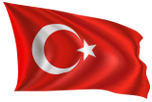Polycystic ovary syndrome symptoms

Polycystic is a word that means "a large number of cysts" and is used to describe this condition. Ovarian is the Latin word for ovary. Polycystic Ovarian (PCO) is the disruption of ovulation as a result of a hormonal environment imbalance in the ovaries that occurs for various reasons and the secretion of excess amounts of androgens (male hormones) from the ovaries. PCO, whose outward-appearing face is in most cases only a menstrual irregularity and feathering, is a metabolic disease that can actually affect the whole body with the participation of the insulin hormone in the event.
Polycystic ovary syndrome (PCOS) is the absence of ovulation and due to this usually occurs in the form of delays in menstrual irregularity, hair removal, weight gain, etc, an inability to conceive or “zor” is a condition that can conceive and watch with a wide range of other symptoms.
WHAT ARE PCOS INDICATIONS?
The most obvious symptom is excessive hair growth. Especially the facial hair, in the form of a moustache, is very frequent in the nipples, between the chest, around the navel, in the inner parts of the leg. This is because the small cysts that form are released from excess amounts of the androgen known as the male hormone. Again with the effect of these hormones, pimples are formed called acne on the face and body. Hair loss begins Another symptom of this disease is irregular menstruation and menstrual delays. Since these people do not have ovulation, they also have trouble not being able to conceive. At the same time, obesity is a prominent feature of this disease.
Because polycystic ovary syndrome is a very heterogeneous problem, the symptoms may also vary from person to person. In other words, menstrual irregularity or hairiness may not appear in every polycystic ovary patient. Or there may be patients with polycystic ovary syndrome who menstruate two to three times a year, or patients who menstruate ten times a year.
HOW IS PCOS DIAGNOSED?
Ultrasonographic view: Sequenced appearance of non-developing eggs such as rosary grain, Laboratory Findings: Signs such as increased testosterone, Insulin, LH, etc,
Clinical Findings: PCOS is diagnosed with signs such as weight gain, hair growth, menstrual regularity.
HOW IS PCOS TREATED?
PKO is a condition that must be treated. Weight loss contributes significantly to treatment There are 2 types of treatment, including drug treatment or surgical treatment, Drug treatment varies according to the patient's desire for children.
If the patient does not want children
First of all, it is necessary to provide the menstrual cycle. Because in these women who do not have long-term menstruation, estrogen begins to act inside the uterus alone and increases the risk of uterine cancer.
The second point is to destroy the hair. For this purpose, birth control pills are used, which best reduce androgen levels. In this way, both the menstrual cycle is ensured and the risk of uterine cancer and the problem of feathering is reduced. For women who cannot or do not want to use birth control pills, the menstrual cycle must be provided through the delivery of progesterone hormone at certain intervals in order to protect the inner lining of the uterus.
The third point is to balance the weight problem that occurs due to insulin resistance. If the patient has insulin resistance, the use of drugs that reduce this resistance, carbohydrate-free diet and exercise combination are shown to be the most beneficial treatment...
If the patient wants a child
The treatment to be done is to lower the patient's insulin resistance and to make him ovulate. While some women with polycystic ovary can help them have children by ovulation with pills. Some patients do not have enough of these pills. At this point, ovulation is attempted with needles. If there is no pregnancy despite the development of the egg with the drug or needle for a maximum of 6 months, the tube can be passed to the baby treatment.
In surgical treatment, laparoscopy aims to reduce the number of cysts by making small holes in the ovaries and to break the vicious cycle..








